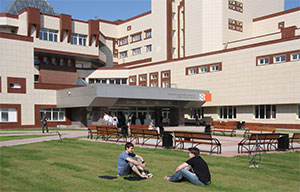Vladimir T. Kalugin, Dr. Sc. (Engineering), Professor, Head of the NUC SM Bauman Moscow State Technical University
Alexander Yu. Lutsenko, Cand. Sc. (Engineering), Docent, First Deputy Dean of the Faculty of SM Bauman Moscow State Technical University
Irina K. Romanova-Bolshakova*, Cand. Sc. (Engineering), Docent, Deputy Dean for Master’s Degree of the Faculty of SM Bauman Moscow State Technical University, e-mail: irina.romanova@bmstu.ru, https://orcid.org/0000-0002-5757-350X
New tasks in the field of artificial intelligence are presented — to make it understandable and accessible. The problems of the “black box” in artificial intelligence (AI) are currently being solved very successfully within the framework of a new direction — eXplainable artificial intelligence (XAI), recognized as artificial intelligence of the third generation. The article defines the concepts and problems of explainability of AI, describes the methods of solving in the field of explainability of AI. The role of XAI as an interface between complex intelligent systems and data specialists, domain experts, developers and operators of new technology, and end users is noted. It helps to decipher the complex internal mechanisms of the machine learning (ML) black box, making the reasons for their decisions more understandable. Explicable machine learning methods increase the transparency of use and the level of trust of people. The current state of AI in the field of RCT (rocket and space technology) and the areas of RCT in which it is advisable are noted.
Keywords: competencies of developers of rocket, space and aviation technology, artificial intelligence, explainable artificial intelligence
References
1. Kalugin, V.T., Lutsenko, A., Romanova, I. Implementation of artificial intelligence development strategy in the Russian Federation in the educational programs of aerospace engineering training of Bauman Moscow State Technical University/shs web of conferences. XI International Conference on Aerospace Education and Staffing for High-Tech Enterprises (AESHE 2021). Т. 137. Moscow, 2022.
2. Romanova, I.K. Development of a New Concept of Modeling Systems Based on the Application and Development of Modern Information Technologies. AIP Conference Proceedings. 2022. Vol. 2383. P. 030001-1-030001-9. https: doi.org/10.1063/5.0074539
3. Sepideh Pashamia, Sławomir Nowaczyka, Yuantao Fana, Jakub Jakubowskih etc. Explainable Predictive Maintenance. Preprint submitted to Expert Systems with Applications. 2023. June 9. 51 p.
4. Popov, N.V., Shevskaya, N.V. Methods of explainable artificial intelligence based on feature space analysis. International scientific conference on control problems in technical systems of St. Petersburg. 2021. Vol. 1. Pp. 298–301.
5. Averkin, A.N. Explainable artificial intelligence as part of third-generation artificial intelligence. Speech technologies. 2023. No. 1. Pp. 4–10
6. Shevskaya, N.V. Explainable artificial intelligence and methods for interpreting results. Modeling, Optimization and Information Technology. 2021. No. 9 (2). URL: https://moitvivt.ru/ru/journal/pdf?id=1005 DOI: 10.26102/2310-6018/2021.33.2.02412
7. Rudresh Dwived, Devam Dave, Het Naik, Smiti Singhal etc. Explainable AI (XAI): Core Ideas, Techniques and Solutions ORCA, Cardiff University’s http://dx.doi.or g/10.1145/3561048. 35 p. (accessed on: 16.12.2024).
8. Scott M. Lundberg, Gabriel Erion, Hugh Chen, Alex DeGrave1, etc. Explainable AI for Trees: From Local Explanations to Global Understanding. May 2019. DOI: 10.48550/arXiv.1905.04610 (дата обращения: 16.12.2024).
9. Explain network predictions using LIME. URL: https://www.mathworks.com/help/deeplearning/ref/imagelime.html (accessed on: 16.12.2024).
10. Giorgio Visani, Enrico Bagli, Federico Chesani. OptiLIME: Optimized LIME Explanations for Diagnostic Computer Algorithms. June 2020. 8 p. DOI: 10.48550/arXiv.2006.05714
11. Yunyan Zhang, Daphne Hong, Daniel McClemen. Grad-CAM helps interpret the deep learning models trained to classify multiple sclerosis types using clinical brain magnetic resonance imaging. Journal of Neuroscience Methods. April 2021. V. 353: 109098. DOI: 10.1016/j.jneumeth.2021.109098
12. Antoine Hudon, Théophile Demazure, etc. Explainable Artificial Intelligence (XAI): How the Visualization of AI Predictions Affects User Cognitive Load and Confidence. 29 October 2021. Pp. 237–246.
13. Romanova, I.K. Modern methods of visualization of multidimensional data: analysis, classification, implementation, applications in technical systems. Science and education. 2016. No. 3. Pp. 133–167.
14. Mouhamadou-Lamine Ndao, Genane Youness, Ndèye Niang, Gilbert Saporta. Enhancing Explainability in Predictive Maintenance: Investigating the Impact of Data Preprocessing Techniques on XAI Effectiveness Investigating the Impact of Data Preprocessing Techniques on XAI Effectiveness. The 37th International Conference of the Florida Artificial Intelligence Research Society, May 2024, Florida, United States. ff10.32473/flairs.37.1.135526ff. ffhal-04579205f
15. Shreyas Gawde, Shruti Patil, etc. Explainable Predictive Maintenance of Roating Machines Using LIME, SHAP, PDP, ICE / Received 24 December 2023, accepted 12 February 2024, date of publication 19 February 2024, date of current version 29 February 2024. DOI: 10.1109/ACCESS.2024.3367110
16. Shreyas Gawde, Shruti Patil, Satish Kumar, Pooja Kamat, Ketan Kotecha. An explainable predictive maintenance strategy for multi-fault diagnosis of rotating machines using multi-sensor data fusion. URL: https://doi.org/10.1016/j.dajour.2024.100425
17. The rise of industrial explainable artificial intelligence (XAI) — Insights across the AI life cycle The rise of industrial explainable artificial intelligence (XAI). URL : https://assets.new.siemens.com/siemens/assets/api/uuid:3b4de373-57e2-432...
18. Artificial intelligence in rocket and space technology JSC “Organization ‘Agat’”. URL: https://agat-roscosmos.ru/digests/iskusstvennyy-intellekt-v-raketno-kosm... otrasli-21/
19. Balukhto, A.N., Romanov, A. Artificial intelligence in space technology: status, development prospects. Rocket and space instrumentation and information systems. 2019. Vol. 6. Iss. 1. Pp. 65–75.
20. Bibhudhendu Shukla1, Ip-Shing Fan2, Ian Jennions. Opportunities for Explainable Artificial Intelligence in Aerospace Predictive Maintenance. July 2020. Conference: 5th European Conference of the Prognostic and Health Management Society 2020. 11 p. URL: http://phmpapers.org/index.php/phme/article/view/1231
21. Premaratne Samaranayake, Senevi Kiridena. Aircraft maintenance planning and scheduling: An integrated framework. Journal of Quality in Maintenance Engineering. 2012. Pp. 432–453. URL: https://ro.uow.edu.au/engpapers/5188












.png)






